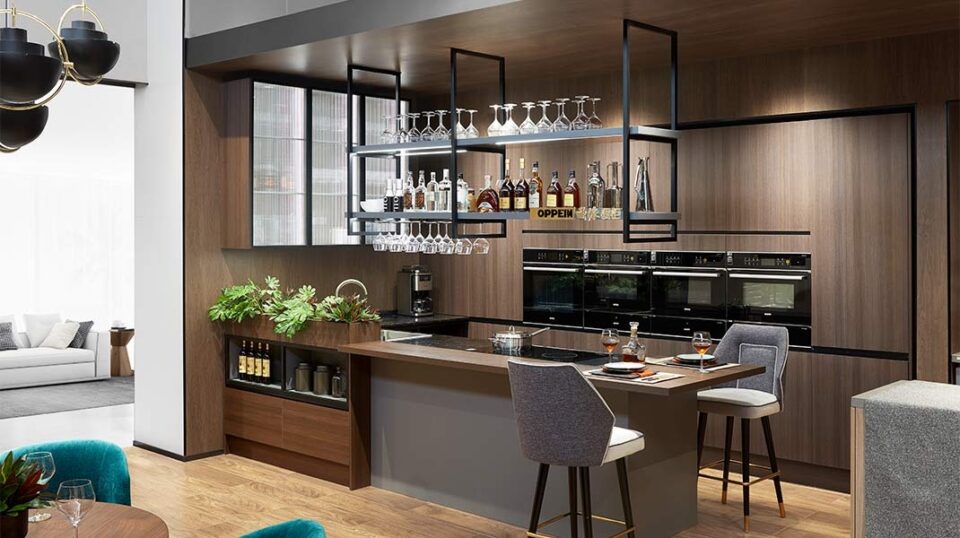As we move into 2024, the world of interior design is set to embrace new trends that reflect evolving lifestyles, technological advancements, and a deeper connection to nature. This year’s trends are characterized by a blend of innovative design techniques and a return to timeless elements. From sustainable materials to multi-functional spaces, here are the top interior design trends for 2024.
1. Sustainable and eco-friendly design
Sustainability continues to be a significant focus in interior design. In 2024, eco-friendly materials and practices are not just trends but essential aspects of creating modern, responsible spaces.
Key elements:
Recycled materials: use of recycled glass, reclaimed wood, and repurposed metal to minimize environmental impact.
Natural fibers: incorporation of natural textiles like organic cotton, linen, and jute.
Energy efficiency: integration of energy-efficient lighting, appliances, and heating systems.
Statistical insight: according to a report by the global wellness institute, sustainable design practices can reduce a building’s environmental impact by up to 40%.
2. Biophilic design
Biophilic design, which seeks to connect interior spaces with the natural world, continues to gain popularity. This trend promotes well-being by integrating elements of nature into the home.
Key elements:
Indoor plants: incorporating a variety of houseplants to improve air quality and add a touch of nature.
Natural light: maximizing natural light through large windows and skylights.
Natural materials: use of wood, stone, and bamboo to create an organic feel.
Statistical insight: a study published in the journal of environmental psychology found that biophilic design can increase productivity and well-being by 15%.
3. Multi-functional spaces
With the rise of remote work and flexible living, multi-functional spaces are becoming essential. Homes are being designed to accommodate various activities within the same area.
Key elements:
Convertible furniture: use of foldable desks, sofa beds, and extendable dining tables to maximize space.
Zoning: creating distinct zones within a room for different activities, such as work, relaxation, and entertainment.
Smart storage: innovative storage solutions like built-in shelves and hidden compartments to keep spaces organized.
Statistical insight: according to a survey by homeadvisor, 68% of homeowners are seeking to create more versatile living spaces.
4. Bold colors and patterns
In 2024, bold colors and patterns are making a comeback, moving away from the minimalist, monochromatic palettes of previous years.
Key elements:
Statement walls: use of vibrant wallpapers and bold paint colors to create focal points.
Mix and match: combining different patterns and textures to add depth and interest.
Color blocking: incorporating contrasting colors in a balanced way to define spaces and create visual impact.
Statistical insight: the color marketing group predicts a 30% increase in the use of bold colors and patterns in home interiors.
5. Vintage and retro styles
Nostalgia plays a big role in 2024 interior design, with vintage and retro styles making a strong comeback. This trend combines modern elements with timeless pieces from the past.
Key elements:
Retro furniture: incorporation of mid-century modern and 70s-inspired furniture pieces.
Vintage decor: use of antique accessories, such as lamps, mirrors, and artwork, to add character.
Mixed eras: blending different time periods to create a unique, eclectic look.
Statistical insight: a study by furniture today found that vintage and retro furniture sales have increased by 25% over the past year.
6. Smart home integration
Smart home technology is seamlessly integrating into interior design, making homes more efficient and customizable.
Key elements:
Voice control: integration of voice-activated assistants to control lighting, temperature, and security systems.
Smart appliances: use of smart refrigerators, ovens, and washing machines that can be controlled remotely.
Home automation: implementation of systems that automate lighting, window treatments, and audio-visual equipment.
Statistical insight: according to statista, the global smart home market is expected to grow by 20% annually, reaching $182 billion by 2025.
7. Artisan and handmade pieces
There is a growing appreciation for artisan craftsmanship and handmade pieces, which add uniqueness and authenticity to home interiors.
Key elements:
Handmade textiles: use of handwoven rugs, tapestries, and blankets to add texture and warmth.
Artisan furniture: incorporation of custom-made furniture pieces that reflect personal style and craftsmanship.
Ceramics and pottery: display of handmade ceramics and pottery as decorative elements.
Statistical insight: the craft council reports a 15% increase in demand for handmade and artisan products in the interior design market.
8. Minimalism with a twist
While minimalism remains popular, it’s evolving to include more personalized and comfortable elements, moving away from stark and cold designs.
For more ideas on how to incorporate minimalist and other interior design styles into your renovation, check out this home design guide by Renozone at https://renozone.com.sg/best-interior-design-styles/.
Key elements:
Warm neutrals: use of warmer neutral colors like beige, taupe, and soft gray to create a cozy atmosphere.
Textural contrast: combining different textures, such as smooth wood, rough stone, and soft textiles, to add depth.
Functional decor: incorporation of functional yet aesthetically pleasing decor items, such as stylish storage solutions and comfortable seating.
Statistical insight: according to houzz, 40% of homeowners are seeking minimalist designs that also emphasize comfort and personalization.
9. Home wellness spaces
With a growing focus on health and well-being, dedicated wellness spaces are becoming a staple in modern homes.
Key elements:
Home gyms: creation of home gym spaces equipped with the latest fitness technology.
Meditation rooms: design of quiet, serene spaces for meditation and relaxation.
Spa bathrooms: incorporation of spa-like features in bathrooms, such as steam showers, soaking tubs, and aromatherapy.
Statistical insight: a report by the global wellness institute found that the demand for home wellness spaces has increased by 35% in the past year.
Conclusion
The interior design trends for 2024 reflect a blend of sustainability, technology, and personalization. From eco-friendly materials and biophilic design to smart home integration and vintage styles, these trends cater to a variety of tastes and lifestyles. By embracing these trends, homeowners can create spaces that are not only beautiful and functional but also supportive of their well-being and the environment.

